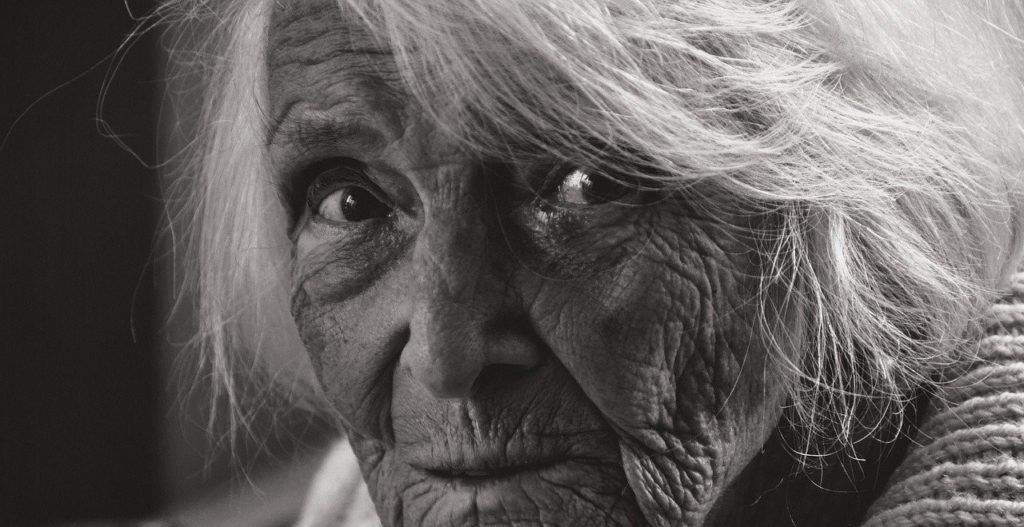Years ago I worked as an accountant at a country club. Two coworkers of mine were husband and wife – she was the event planner and he was the restaurant manager. People snickered and gossiped about the age difference between them. She was a cougar! How much older than him is she??
The truth was that they were both about the same age. He happened to have a babyface, and she had a full head of (gorgeous) white hair. She had a supple, smooth, and youthful face, as well as a lean and trim body. She even had a brand new baby. Everything about her suggested youth. Except for her hair.
It’s amazing how white or gray hair screams OLD!, even drowning out all evidence to the contrary.
I recently came across an article in Scientific American reporting that new research suggests the hair graying process can be reversed. I followed the link to the publication and – well, let’s just say I didn’t throw out my boxed hair dye.
Then I came across other references to the same scientific study, optimistically declaring gray hair can be reversed to its original darkened glory. I felt compelled to break it down. The good news and the bad news.
The Good News
Gray hair can revert to its original color. This has been known for some time. It is evidenced very simply by the fact that some people have hair strands that are gray at some part of the shaft but dark at the root. Since hair grows from the root, this proves that at one time the hair was growing without pigment and then became pigmented again.

While this phenomenon has been noted in previous research, the new study published in eLife is more comprehensive, examining hair pigmentation changes across genders and ethnicities and correlating them with life events.
Of particular interest is the role of stress. Previous research has shown that periods of stress can cause hair to begin to gray. The new research intends to confirm this while investigating whether the removal of stress can reverse the process.
The researchers assembled a group of people with hairs that appeared to have a period of gray growth that reverted to dark growth. They were asked to recall events of the past year, particularly stressful or relaxing times, rating the time periods on a 1-10 scale denoting the intensity of the stress. Using the average growth rate of a human hair (1cm/month) as a timeline, the researchers were able to correlate periods of extreme stress with the hairs losing pigmentation.
There were a couple of fantastic examples.
- A 30-year-old Asian female participant had a single scalp hair with a 2cm long section that was completely gray but then had returned to black. This 2cm section coincided with a two-month-long period of extreme stress in which she had undergone a marital separation and relocation. When her stressor was reduced, her hair appeared to return to its original color.
- In a 35-year-old Caucasian male, five scalp hairs were found to have all reversed their gray color, returning to dark, in the same short time frame. This timing aligned with a period he had recalled as significantly low stress during the past year, and following a two-week vacation.
Essentially, the researchers proved that periods of significant stress can cause hair to gray, while removal of the stressor can reverse the process. Indeed, periods of significant relaxation can return color to previously grayed hairs. (For more information on what periods of significant relaxation are, don’t ask me).
But don’t get too excited yet.
The Bad News
There are three major reasons to keep your hair color appointment at the salon: The rarity of gray hair reversal, the single-follicle nature of the phenomenon, and the graying threshold. Let’s explore.
Rarity
The researchers admit that after 2.5 years of active recruitment, they were able to find only 14 participants with ‘two-toned’ graying hair strands. Of course, anyone who had dyed their hair was ineligible, adding to the scarcity of participants.

This is not a common occurrence. Most people either do not have hair that has reverted from gray to its original color, or they haven’t noticed that they have. It’s easy to miss, considering these effects occur on a hair-by-hair basis.
Single-follicle
This research uniquely points out that hair-graying, and gray-reversal, occurs at isolated hair follicles rather than on a whole head or sections of hair. While the research conclusively determines that it does occur and that a single hair can go back and forth between gray and dark-colored, this phenomenon is likely to go unnoticed.
Even in their most robust example of the 35-year-old male whose hair returned to dark after his two-week vacation, they found five hair strands displaying this reversal distributed at various parts of his scalp. I should think he is still recognizable to friends and family.
Graying threshold
Finally and most discouragingly, through mathematical modeling, the researchers determined that there is a limited period in which a graying hair can gain back its pigmentation. They call this the graying threshold. Essentially, over months or years, a hair follicle is within the threshold to begin to gray. Periods of stress can speed the process, and periods of non-stress can reverse it. But eventually, the hair follicle ages beyond this threshold, and the hair will be irreversibly gray.
Simply put, a 10-year-old under stress is not likely to gray, and a 70-year-old experiencing a relaxing retirement is not going to return to the dark-haired days of his youth.

Again, this threshold and pigmentation changes are functions of the individual hair follicle and all hairs travel through this threshold independently.
The future
Additional criticisms of the study include the small sample size and, while there are participants of varying ethnicity, most were white. However, much can be gained from this study and future research that will stem from it. An understanding of why and when hair grays, why some hair follicles are impacted while others are not, plus the knowledge of a window of time to reverse the phenomenon could give rise to new therapies and remedies.
A trip to your local hair salon could be transformed. Imagine scheduling your hair color treatment and, instead of a bucket of smelly chemicals slathered on your noggin, you’re treated to a massage and aromatherapy session.
But we aren’t there yet.
For the time being, here is yet one more reason to keep your stress down. Consider a career change, or delve into those hobbies. Take a two-week vacation, I hear it works wonders.
Meanwhile, embrace that head of silvery locks and wear it like a helmet of honor! Or, keep your hair appointment.

Pingback: Transitioning to Gray Hair? 5 transitions you should expect to come with it - Where's my sunny porch?